I had my first chimichanga when I was in college; my best friend was a California transplant who had picked up a bunch of Mexican cooking from friends and family. He assembled simple ingredients, and on a miserable New England winter day, presented me with deep-fried burrito perfection. Chimichangas rapidly became my favorite Mexican food, and I have never looked back.
What is a chimichanga?
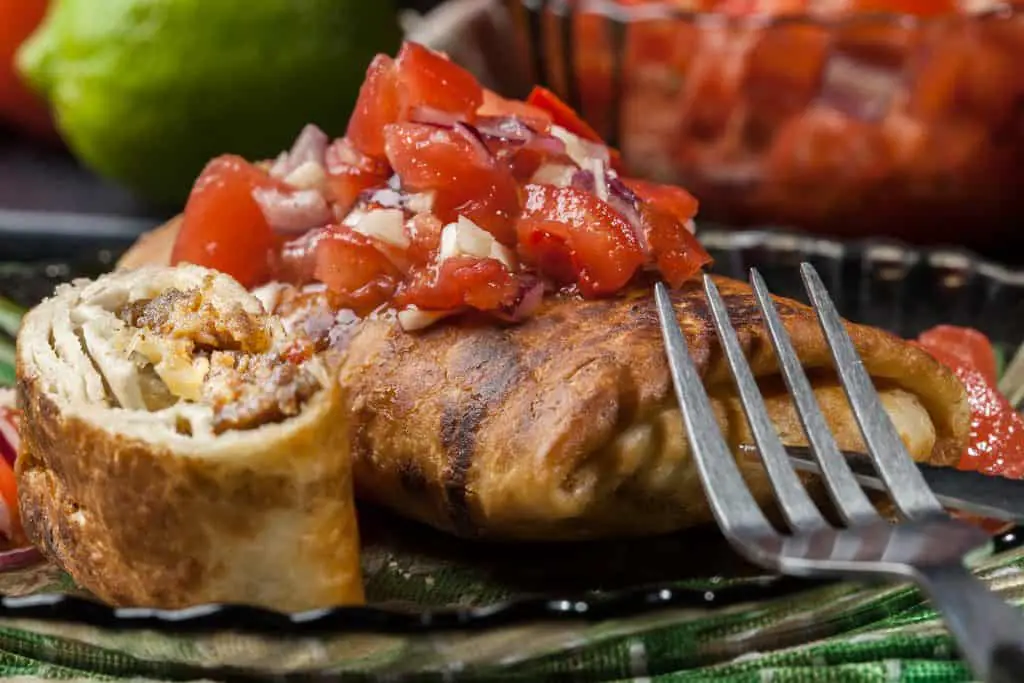
At the essence, a chimichanga is a just a deep-fried burrito. A flour tortilla is filled with favorite ingredients, usually including rice, cheese, and some variety of dried or marinated meat, folded into a rectangular package, and then fried in oil. It is often served with guacamole, salsa, and sour cream or cheese.
Some of the most popular meat fillings for chimichangas include:
- Machaca is usually made from beef or pork that has been dried, spiced, and rehydrated. Slow cooked roast beef or skirt steak which has been shredded and then fried is sometimes substituted
- Carne adobada is pork which has been marinated in a mix of chili sauce with oregano and vinegar, although some regional variations in both meat and marinate can occur
- Carne seca, a specific type of dried beef popular in some regions of Mexico
- Shredded chicken
Vegetarian chimichangas can also be made by substituting beans for the meat.
Where are they popular?
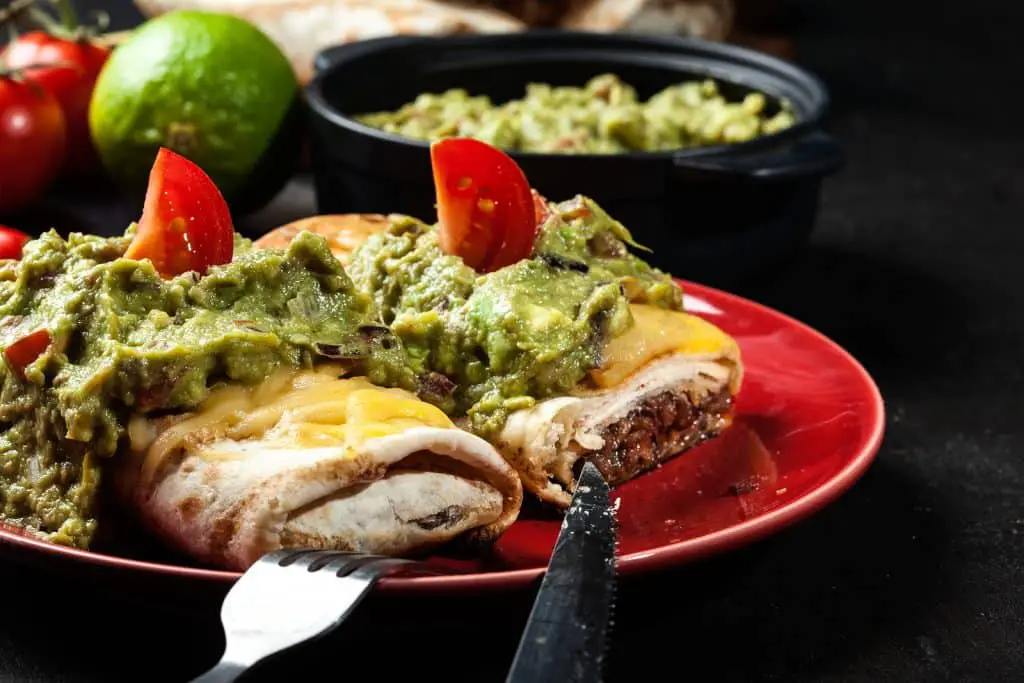
Like many popular regional cuisines, fans debate the exact origins of the fried comfort food. One story suggests that a Tucson cook in the 1940s prepared a burro for a customer, who said it looked raw. The cook, George Jacobs, fried it up, and the rest is history. Another story looks back to the 1920s, when a different cook dropped her burrito into oil and started to swear, then quickly turned the word into “chimichanga,” not unlike your mother in the kitchen shouting “shhhhh…ugar.” Many native Mexicans are very clear that fried burritos are popular in their home country, although they tend to be smaller than the ones we see in the United States.
Whatever their origin, chimichangas are popular in Tex-Mex cuisine, especially in the Southwestern United States. Celia Gongora told blogger Cary Kelly that she grew up eating chimichangas in Sonora, Mexico. Sonora borders both Arizona and New Mexico. They are even one of the favorite foods of Marvel character Deadpool.
How do you make them at home?
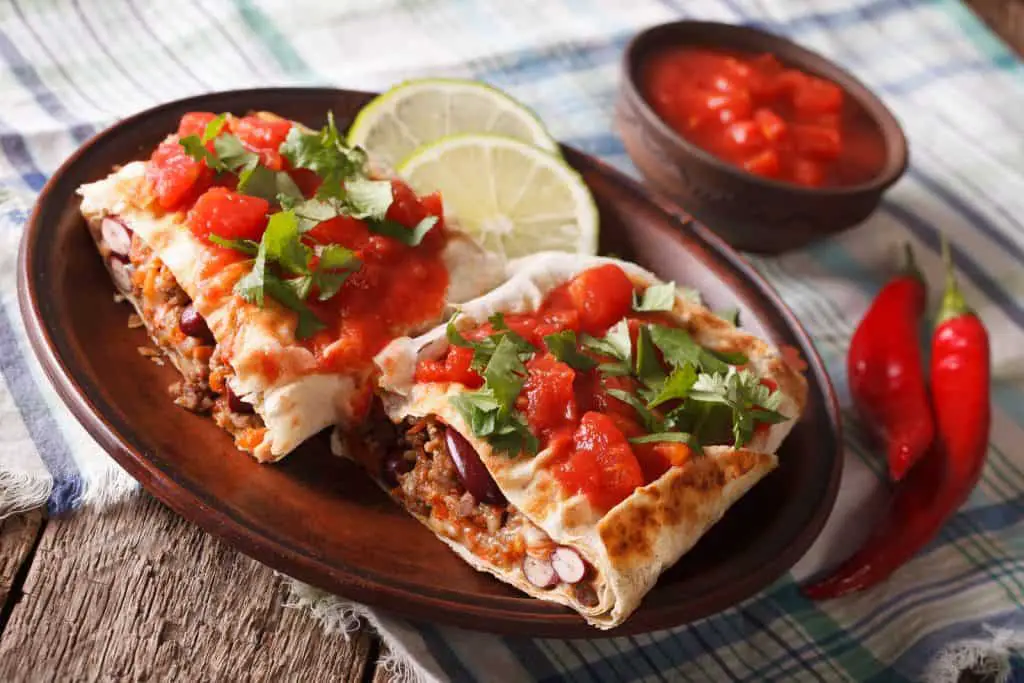
If you can make a burrito at home, and own a frying pan, you can make a chimichanga. I like to keep mine very simple. Get the biggest tortillas you can find, because any leakage is going to make a mess in your pan. I like the ones that are 11 inches across, and a little on the thick side.
Next, choose your meats. I like a mix of shredded chicken, spiced with my favorite taco seasoning mix, and refried beans heated through with salsa. This makes the beans a little runnier, and also helps make sure that your chimichanga cooks all the way through.
Then, you need good quality cheese. Monteray Jack is a classic for American cooks making Mexican food; it melts easily, picks up flavors without overwhelming them the way Cheddar can, but still adds more to the overall flavor than most mozzarellas do. My kitchen is usually full of cheese, so I grab whatever I have close to hand.
When your ingredients are ready to go, roll up some burritos. There are two main methods of burrito folding; you want the kind where both ends close, like this, not the sort where you have an open end, like this. Remember, you’re about to pop this delicious concoction into boiling oil; anything that can escape, will escape. Chimichangas are too amazing to let any of the yumminess go to waste.
Next, heat up your oil on the stovetop. This is not the time to break out your super extra virgin olive oil; you want something that can tolerate high heat. Coconut oil is one of the healthiest oils for frying, but less expensive olive oils can also work well. Stay away from vegetable oils; as poly unsaturated fats, they break down too quickly at high heat.
You want to use a pan with deep sides, at least an inch. Cast iron is ideal, because it heats evenly and holds heat for a long time.
Heat your oil thoroughly before you add your stuffed tortilla. The key to deep frying is that the food begins to cook as soon as it hits the oil, so the oil needs to be at around 350 degrees Fahrenheit before the food is introduced. This will help create a crisp outer skin on the tortilla, as the insides steam and cook the chimichanga all the way through.
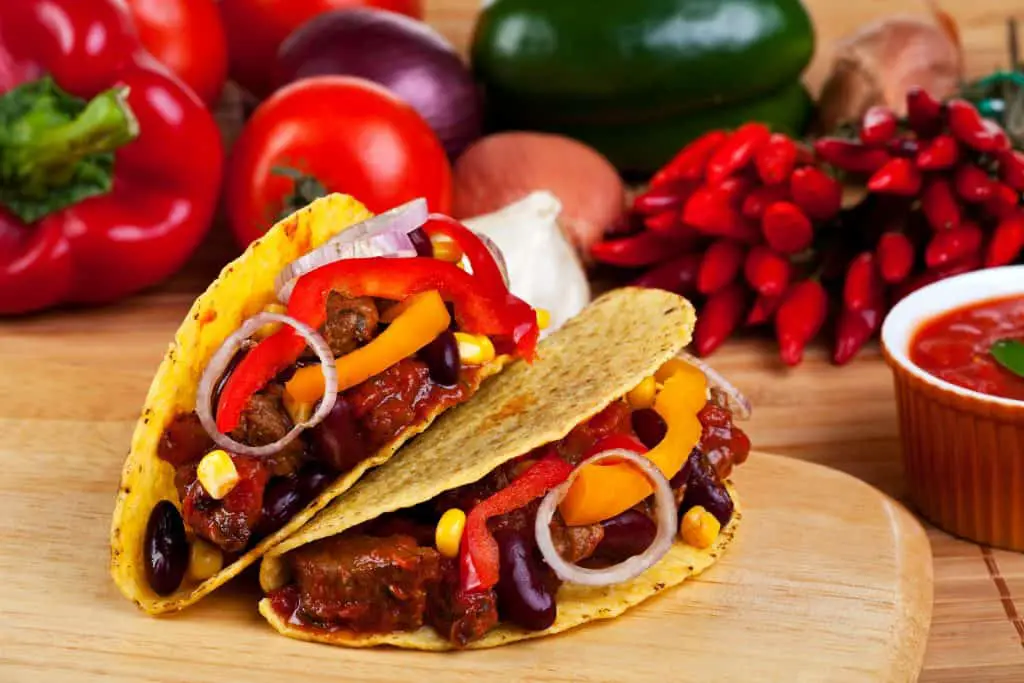
Cook your chimichanga for about five minutes on each side. Use a slotted spoon to lift the chimichanga out of the oil and place on a paper towel to drain and cool for a few minutes before serving.
This is just one way to make chimichangas! Just like burritos, you could add grilled vegetables, variations on spices, different sauces, or different meats. Experiment to find out what you and your family love best. Serve chimichangas with rice and grilled vegetables or chips and pico de gallo.
When should you eat chimichangas?
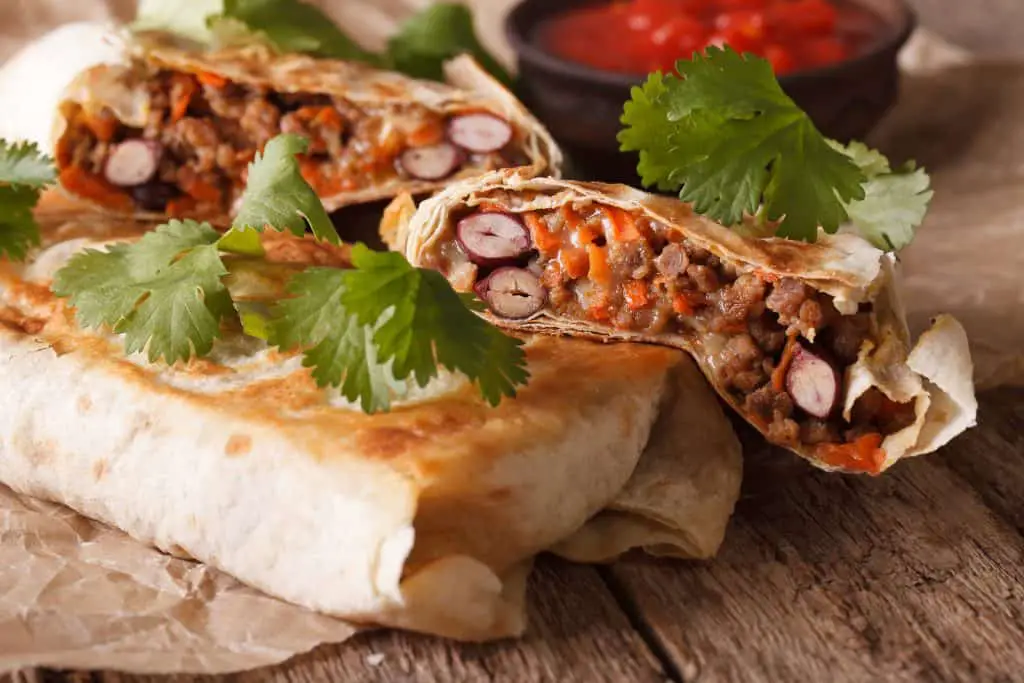
As far as I’m concerned, you should eat chimichangas every single day. These are a thousand times better (and healthier) than any hot-pocket type meal you’ve ever eaten. Fill them with scrambled eggs and grilled veggies for breakfast, or tofu, rice, and vegetables for a vegan delight. While I love my chimichangas so hot that I burn the roof of my mouth on them, they are also delicious for lunch the next morning. Wrap them tightly in foil and reheat in the oven, or eat them cold. Delicious!
How are you going to add chimichangas to your weekly meal rotation?
